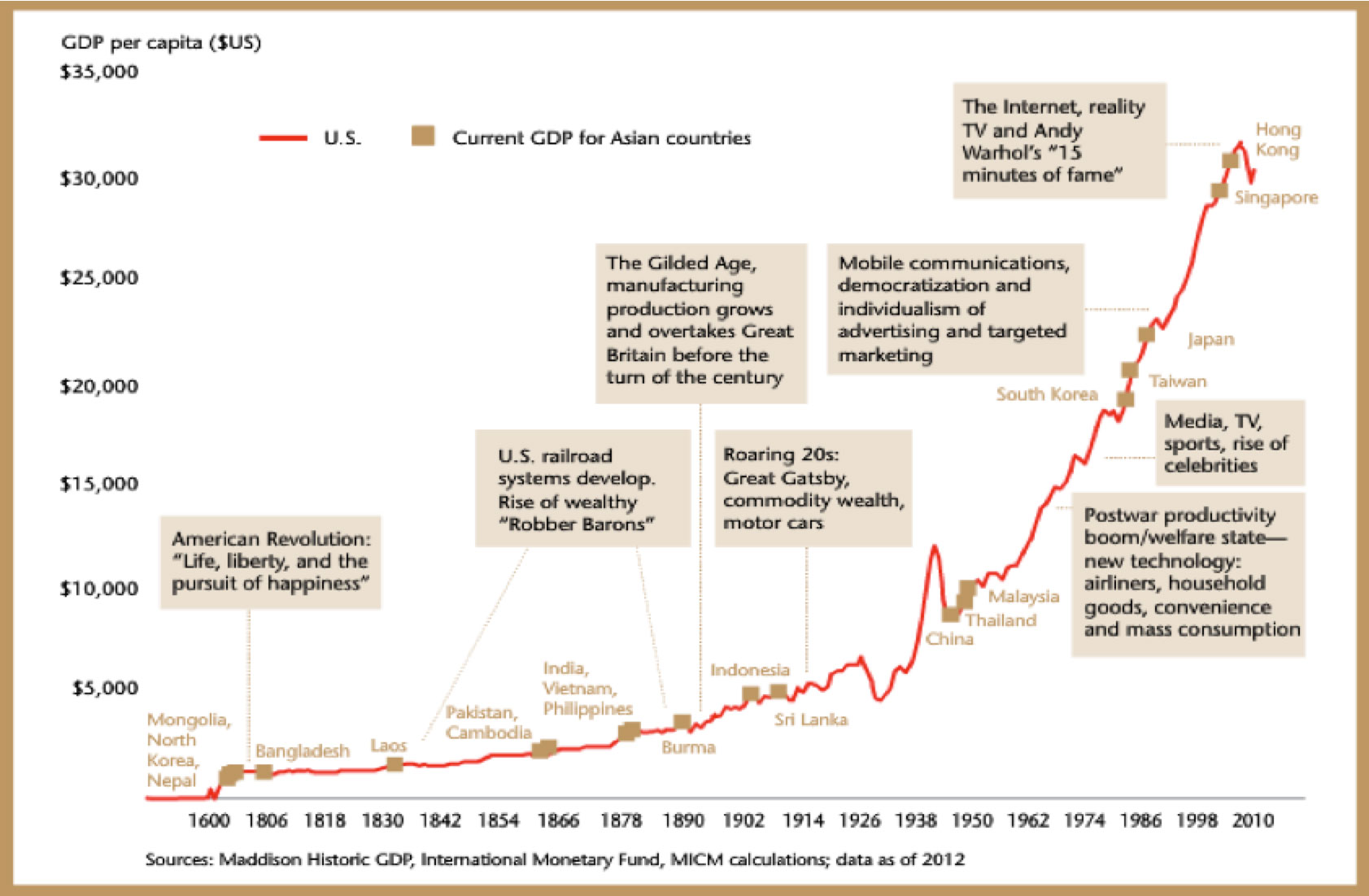Yesterday, I examined Asia’s two big economies, Japan and China. In particular, their slowing growth and what it means for investments in those countries.
Today, I’m going to show you where to find 6% to 8% annual growth.
To find high and lasting growth, you need to invest in countries that are booming. Many of these so-called “frontier” markets have many more motorcycles than cars on the road, and some don’t even have a McDonald’s (NYSE:MCD).
Frontier markets offer investors a combination of great value, huge upside, and unique challenges.
As giants run into growing pains, higher costs, and negative returns, frontier markets are being fueled by a bit more political stability and easy access to modern communications, technology, and capital. The simple smartphone has connected every citizen to the global economy, as well as MIT’s free online education.
My reasoning for choosing frontier markets is simple and powerful. Frontier countries are far behind developed countries like Japan and America, and are even playing catch-up with countries like Thailand, Singapore, and Malaysia.
But they’re catching up fast. Imagine a chance to invest right now in the China of 1990 or even 1980, when its wages were at rock-bottom levels and it exported in a year what it now does every day.
As you can see from the chart below, many of these countries are at levels of gross domestic product (GDP) per capita that were achieved by America before 1900.

Youthful populations and the migration from rural areas to higher-income jobs in the cities are supercharging growth in these economies.
The median age of many of these countries is at the demographic sweet spot of 25 years, compared to 37 years in China and South Korea, and 45 years in Germany and Japan.
This explains the optimism driving families to open their first bank accounts and purchase new houses, washing machines, refrigerators, cars, as well as better food and medical care. This, in turn, explains why big companies from Japan, China, America, Europe, and South Korea are falling all over themselves and each other to invest in frontier Asia.
And it’s not just lucrative new consumer markets and rising tourism that’s driving this wave of capital, but the need to access the region’s natural resources.
Evidence of this optimism and virtuous cycle of growth is everywhere:
- Since 2009 and the cooling of its civil war, Sri Lanka’s GDP has surged 40% and is now double that of India on a per capita basis.
- The 12th-largest shopping mall in the world is in Dhaka, Bangladesh.
- A $20 billion energy investment by Exxon Mobil (NYSE:XOM) in Papua New Guinea has the potential to double the size of its economy.
- And even China is pouring capital into these markets, investing more than $1 billion in one industrial park in Vietnam.
Be Wary of Frontier ETFs
But I caution you to avoid broad-based frontier market exchange-traded funds (ETFs) such as iShares’ or Guggenheim’s. They take too much of a shotgun approach with respect to countries and sectors.
You need to zero in on Asian frontier markets using an active strategy that balances diversification and focus.
You might consider the Asia Frontier Capital Fund, which I like for a number of reasons:
- 47% of its portfolio is in consumer stocks aiming to capture the young and rising consumer class.
- I like the fund’s 30% top weighting to Vietnam and the smart strategy of investing in each country’s strengths, such as tourism in Sri Lanka, mining in Mongolia, consumer food companies in Vietnam, and textiles and manufacturing in low-cost Bangladesh.
- Many of the fund’s companies have significantly lower valuations compared to similar emerging and western companies, making them attractive acquisition targets.
- The fund produces a nice 4.3% dividend yield for income and lower risk.
The Asia Frontier Capital Fund has delivered the best performance of all frontier funds in the world over the last three years with lower volatility.
It’s up 33.4% versus the MSCI Frontier 100 (NYSE:FM) Index, which is up only 2.4%. In addition, it’s the only frontier fund in the world that was up in 2015.
High-growth frontier Asia is on the move. Make some room in your portfolio for these markets today.
by Carl Delfeld
